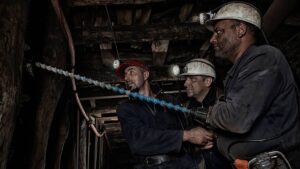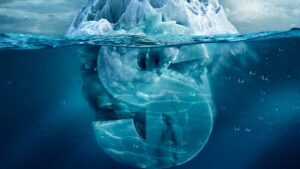The Atlas of Australian mines waste could highlight economical opportunities to recover critical minerals

Pic: Ilka & Franz (Stone) via Getty Images
- The Atlas will highlight economical critical minerals opportunities
- Investigates reprocessing waste as a potential new resource stream
- Could improve sustainability and social licences of existing mines
Good old Geoscience Australia has created a new Atlas of Australian mine waste which it says could highlight new opportunities to recover valuable minerals – a concept known as secondary prospectivity.
GA has teamed up with the University of Queensland, RMIT University and the Geological Survey of Queensland to develop the atlas as part of the Government’s $225 million Exploring for the Future program.
Basically, the idea is to create a national database of mine waste sites across the country and the minerals that could potentially be present.
But more than that, the team will assess if recovering any of the minerals is economically viable – which will help Aussie resources players to make informed investment decisions as to whether it’s worth taking a closer look.
Secondary prospectivity for critical minerals
Geoscience Australia’s Minerals, Energy and Groundwater Division chief Dr Andrew Heap said in addition to new discoveries, mine waste sites could provide additional sources of critical minerals, which are essential ingredients in many modern technologies including smartphones, batteries and electric vehicles.
“Critical minerals such as cobalt and platinum group elements can be recovered as by-products from processing the ores of major commodities like copper and nickel,” he said.
“Maximising the secondary prospectivity potential from existing mines also presents a new opportunity for mining companies seeking to improve the sustainability and social licence of their operations.”
Building on Queensland’s mine waste recycling
The Atlas will build on an approach pioneered by UQ and the Geological Survey of Queensland’s Secondary Prospectivity Project, which identifies sites for mine waste recycling across Queensland.
“This project originally focused on the potential for cobalt in copper tailings in the Mount Isa area, before our investigations widened to tailings dams and mine storage facilities throughout Queensland,” Geological Survey of Queensland director of Minerals Geoscience, Dr Helen Degeling said.
“We are delighted that this concept will now be applied across the country to help meet the growing global demand for new economy metals in a more sustainable way.”
Turning waste into a gold mine? Yes please
The University of Queensland’s Associate Professor Anita Parbhakar-Fox said reprocessing mine tailings could make more financial and environmental sense than other mine rehabilitation options, particularly in the pursuit of critical metals.
“Based on some of our field investigations, we have demonstrated that you could turn waste into a gold mine, literally,” she said.
Essentially, assessing how mine waste could be reprocessed to generate a potentially large new resource stream is one of the best ways of creating a sustainable supply chain – especially for critical minerals.
Mining companies are encouraged to help build the Atlas by allowing researchers to sample mine waste at their sites.
Related Topics
UNLOCK INSIGHTS
Discover the untold stories of emerging ASX stocks.
Daily news and expert analysis, it's free to subscribe.
By proceeding, you confirm you understand that we handle personal information in accordance with our Privacy Policy.








